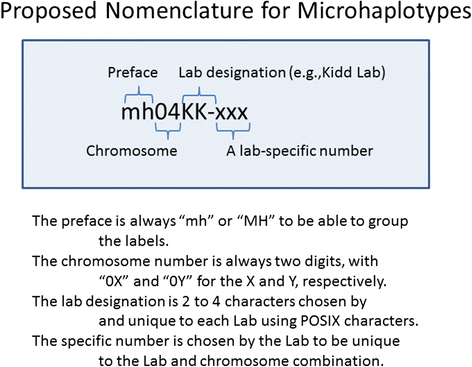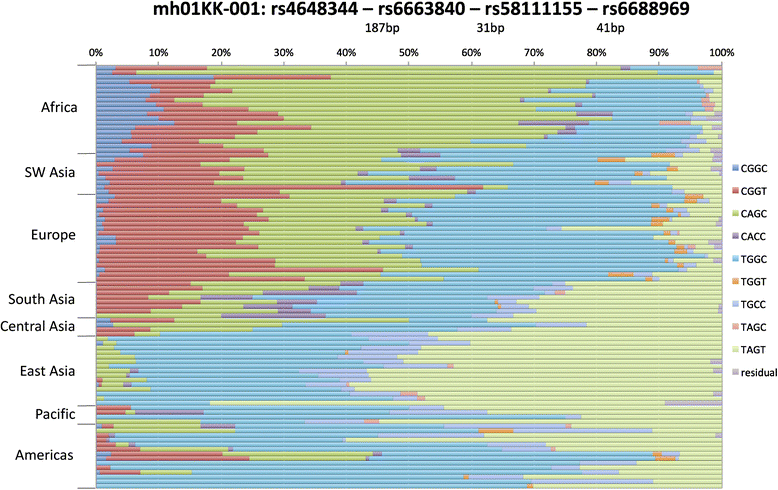Proposed nomenclature for microhaplotypes
- PMID: 27316555
- PMCID: PMC4912715
- DOI: 10.1186/s40246-016-0078-y
Proposed nomenclature for microhaplotypes
Abstract
Microhaplotypes are a new type of genetic marker in forensics and population genetics. A standardized nomenclature is desirable. A simple approach that does not require a central authority for approval is proposed. The nomenclature proposed follows the recommendation of the HUGO Gene Nomenclature Committee ( http://www.genenames.org ): "We strongly encourage naming families and groups of genes related by sequence and/or function using a "root" symbol. This is an efficient and informative way to name related genes, and already works well for a number of established gene families…" The proposal involves a simple root consisting of "mh" followed by the two-digit chromosome number and unique characters established by the authors in the initial publication. We suggest the unique symbol be an indication of the laboratory followed by characters unique to the chromosome and laboratory. For instance, the microhaplotype symbol mh01KK-001 refers to a locus on chromosome 1 published by the Kidd Lab (KK-) as their #001. Publication defines mh01KK-001 as comprised of four single nucleotide polymorphisms (SNPs), rs4648344, rs6663840, rs58111155, and rs6688969.
Figures
References
-
- Kidd KK, Pakstis AJ, Speed WC, Lagace R, Chang J, Wootton S, et al. Microhaplotype loci are a powerful new type of forensic marker. Forensic Sci Int: Genet Suppl Ser. 2013;4(1):e123–e4.
-
- Kidd KK, Speed WC, Wootton S, Lagace R, Langit R, Haigh E, et al. Genetic markers for massively parallel sequencing in forensics. Forensic Sci Int: Genet Suppl Ser. 2015
-
- The ALlele FREquency Database ALFRED. https://alfred.med.yale.edu/alfred/. Accessed: Accessed 31st March, 2016
Publication types
MeSH terms
LinkOut - more resources
Full Text Sources
Other Literature Sources
Miscellaneous



